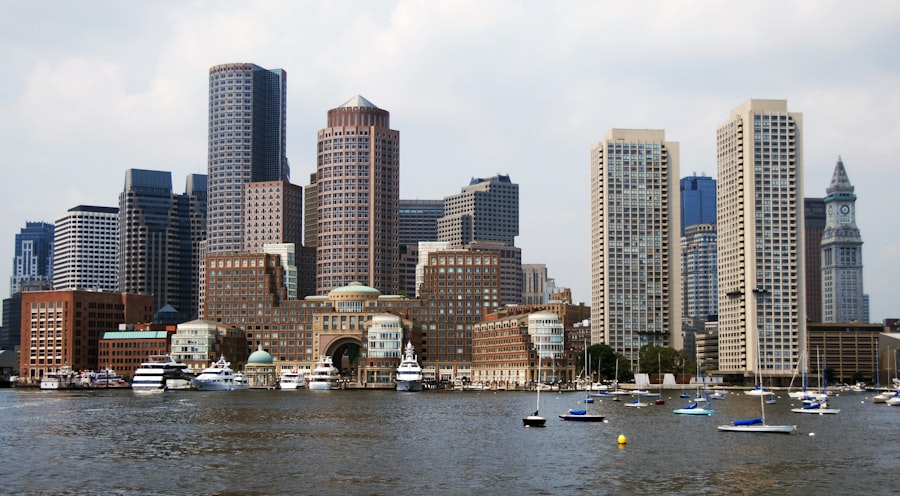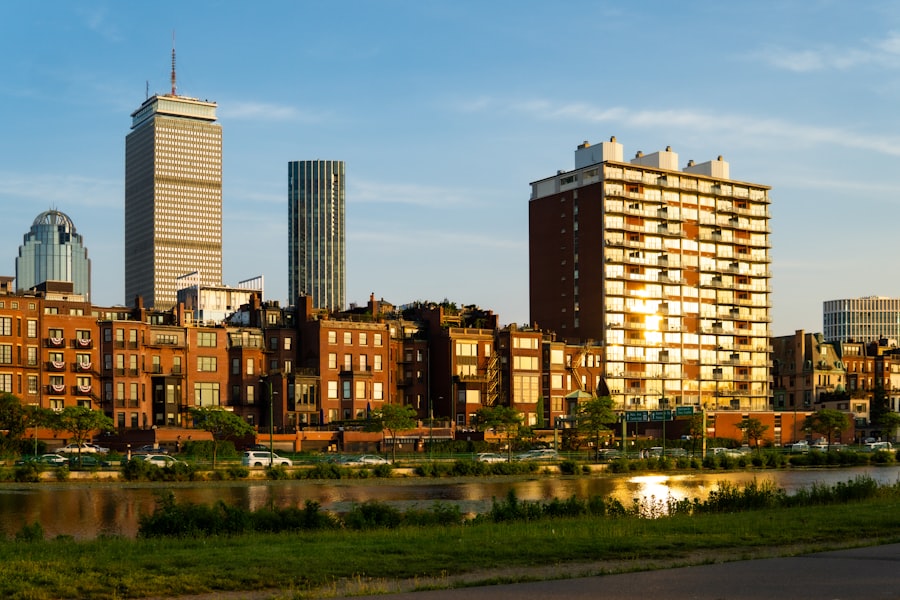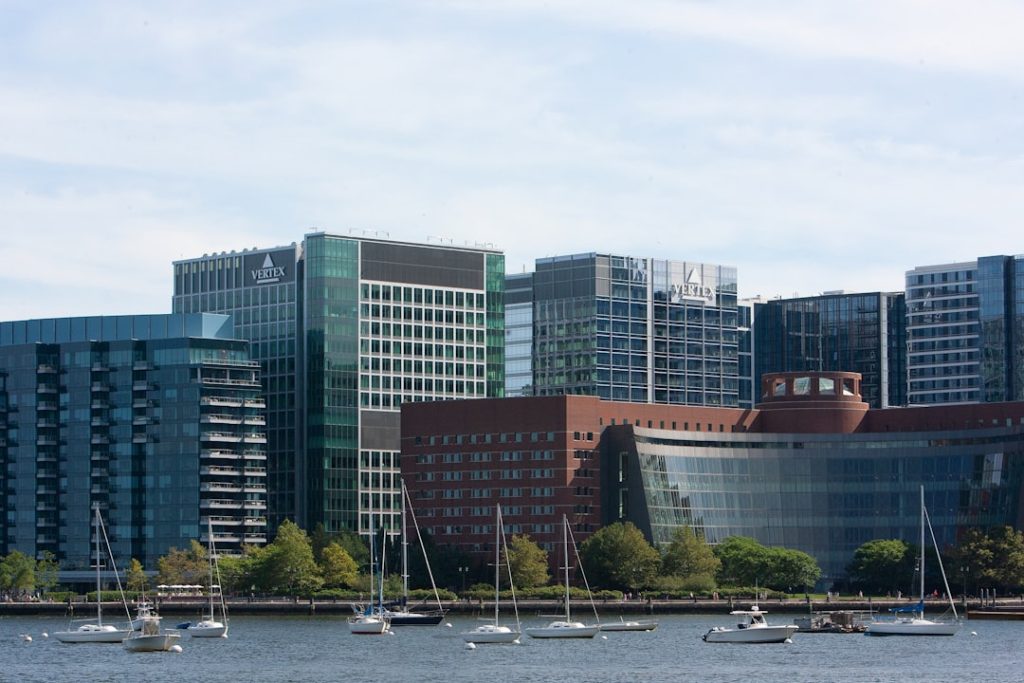The Boston Growth Matrix serves as a conceptual framework for understanding the multifaceted dynamics of urban development in one of America’s oldest cities. This matrix encapsulates the interplay between various factors that influence growth, including economic trends, demographic shifts, regulatory environments, and community needs. As Boston continues to evolve, the Growth Matrix provides a lens through which stakeholders—developers, policymakers, and residents—can assess opportunities and challenges in the urban landscape.
The matrix is not merely a static model; it is a living document that reflects the ongoing changes in Boston’s socio-economic fabric. At its core, the Boston Growth Matrix emphasizes the importance of strategic planning and informed decision-making. It highlights how different sectors, such as housing, commercial real estate, and public infrastructure, interact with one another.
For instance, a surge in population density may necessitate increased housing development, which in turn could impact local businesses and public services. Understanding these interdependencies is crucial for anyone looking to navigate the complexities of Boston’s development scene effectively.
Key Takeaways
- The Boston Growth Matrix provides a framework for understanding and managing urban development in the city.
- Navigating zoning and permitting is crucial for successful development projects in Boston.
- Community engagement plays a significant role in shaping development outcomes and gaining public support.
- Sustainable and green development initiatives are key priorities in Boston’s growth strategy.
- Developers must balance economic, social, and environmental factors to overcome challenges and seize opportunities.
Understanding the Development Landscape in Boston
Boston’s development landscape is characterized by a rich tapestry of historical significance and modern innovation. The city boasts a unique blend of colonial architecture and contemporary skyscrapers, reflecting its evolution over centuries. The historical context plays a significant role in shaping current development practices; many neighborhoods are subject to preservation laws that protect their architectural integrity while also posing challenges for new construction.
For example, the Back Bay area is renowned for its Victorian brownstones, which creates a delicate balance between maintaining historical aesthetics and accommodating modern needs. Moreover, Boston’s demographic shifts are reshaping the development landscape. The influx of young professionals and families has led to increased demand for housing, particularly in urban areas close to employment centers.
This demographic trend has prompted developers to explore innovative housing solutions, such as mixed-use developments that combine residential units with retail and office spaces. The Seaport District exemplifies this trend, where former industrial land has been transformed into a vibrant hub of residential and commercial activity. However, this rapid development raises questions about affordability and accessibility, as rising property values can displace long-term residents.
Navigating Zoning and Permitting Processes

The zoning and permitting processes in Boston are critical components of the development landscape that can significantly influence project timelines and outcomes. Zoning regulations dictate land use, building heights, density, and other essential factors that developers must consider when planning new projects. Boston’s zoning code is complex and often requires careful navigation to ensure compliance with local laws.
For instance, certain neighborhoods may have specific zoning overlays that impose additional restrictions or requirements on new developments. Permitting is another crucial aspect of the development process that can be both time-consuming and intricate. Developers must secure various permits from multiple city agencies before breaking ground on a project.
This often involves public hearings, environmental reviews, and consultations with community stakeholders. The process can be daunting; however, understanding the nuances of zoning and permitting can lead to more successful project outcomes. Engaging with city planners early in the process can provide valuable insights into potential hurdles and streamline approvals.
The Role of Community Engagement in Boston’s Development
| Metric | Description | Value | Year |
|---|---|---|---|
| Community Meetings Held | Number of public community engagement meetings organized by the city | 120 | 2023 |
| Resident Participation Rate | Percentage of local residents participating in community planning events | 35% | 2023 |
| Neighborhood Improvement Projects | Number of projects initiated based on community feedback | 45 | 2022 |
| Public Satisfaction Rate | Percentage of residents satisfied with community engagement efforts | 78% | 2023 |
| Volunteer Hours Contributed | Total hours volunteered by community members in development projects | 15,000 | 2023 |
| Funding Allocated to Community Initiatives | Amount of city budget dedicated to community-driven development programs | 8,500,000 | 2023 |
Community engagement is an essential element of the development process in Boston, as it fosters collaboration between developers and residents. Engaging local communities helps ensure that new projects align with the needs and desires of those who will be most affected by them. In recent years, there has been a growing recognition of the importance of inclusive planning processes that prioritize community input.
For example, developers are increasingly hosting public meetings to gather feedback on proposed projects, allowing residents to voice their concerns and suggestions. This participatory approach not only enhances transparency but also builds trust between developers and communities. When residents feel heard and valued, they are more likely to support new developments rather than oppose them.
Successful examples of community engagement can be seen in projects like the redevelopment of the Boston Waterfront, where extensive public consultation led to a design that incorporates parks, walkways, and public spaces that benefit both residents and visitors alike.
Economic and Social Impacts of Development in Boston
The economic impacts of development in Boston are profound and multifaceted. New construction projects create jobs, stimulate local economies, and increase tax revenues for the city. For instance, large-scale developments such as the Boston Landing project have generated thousands of construction jobs while also attracting businesses to the area.
This influx of economic activity can lead to improved public services and infrastructure as tax revenues rise. However, the social impacts of development are equally significant and often more complex. While new developments can enhance neighborhood amenities and attract investment, they can also lead to gentrification and displacement of long-standing residents.
The challenge lies in balancing economic growth with social equity. Policymakers must consider strategies such as affordable housing initiatives or community benefit agreements that ensure new developments contribute positively to the existing community fabric rather than eroding it.
Sustainability and Green Development Initiatives in Boston

Sustainability has become a cornerstone of urban development in Boston as the city grapples with climate change and environmental challenges. The city has set ambitious goals for reducing greenhouse gas emissions and promoting sustainable practices across all sectors of development. Initiatives such as the Boston Climate Action Plan outline strategies for enhancing energy efficiency in buildings, increasing green spaces, and promoting public transportation.
Green building practices are increasingly being adopted by developers who recognize the long-term benefits of sustainability. Projects like the LEED-certified One Dalton Street demonstrate how modern architecture can incorporate eco-friendly materials and energy-efficient systems while still meeting aesthetic standards. Additionally, urban green spaces are being prioritized in new developments to enhance biodiversity and improve residents’ quality of life.
The Rose Kennedy Greenway is a prime example of how integrating green infrastructure into urban planning can create vibrant public spaces that foster community interaction.
Challenges and Opportunities in Boston’s Development Landscape
Boston’s development landscape is rife with challenges that require innovative solutions from stakeholders across various sectors. One significant challenge is the limited availability of land for new construction due to the city’s historical layout and dense population. This scarcity often leads to intense competition for prime real estate, driving up costs and complicating negotiations for developers seeking to enter the market.
Despite these challenges, there are numerous opportunities for growth within Boston’s development framework. The city’s commitment to revitalizing underutilized areas presents avenues for transformative projects that can benefit both developers and communities. For instance, initiatives aimed at repurposing vacant lots or abandoned buildings into mixed-use developments can breathe new life into struggling neighborhoods while addressing housing shortages.
Furthermore, advancements in technology are enabling smarter urban planning practices that can optimize land use and enhance sustainability efforts.
Strategies for Successful Navigating the Boston Growth Matrix
Successfully navigating the Boston Growth Matrix requires a multifaceted approach that considers economic viability, community needs, regulatory frameworks, and sustainability goals. Developers must engage with local communities early in the planning process to build trust and ensure alignment with resident priorities. Understanding zoning laws and permitting processes is essential for minimizing delays and maximizing project success.
Moreover, embracing sustainability as a core principle can not only enhance project appeal but also contribute positively to Boston’s long-term resilience against climate change. By leveraging innovative technologies and sustainable practices, developers can create spaces that meet contemporary needs while preserving the city’s rich historical character. In summary, navigating Boston’s complex development landscape demands a strategic blend of collaboration, foresight, and adaptability.
By recognizing the interconnectedness of various factors within the Growth Matrix, stakeholders can work together to shape a vibrant urban future that benefits all Bostonians.




